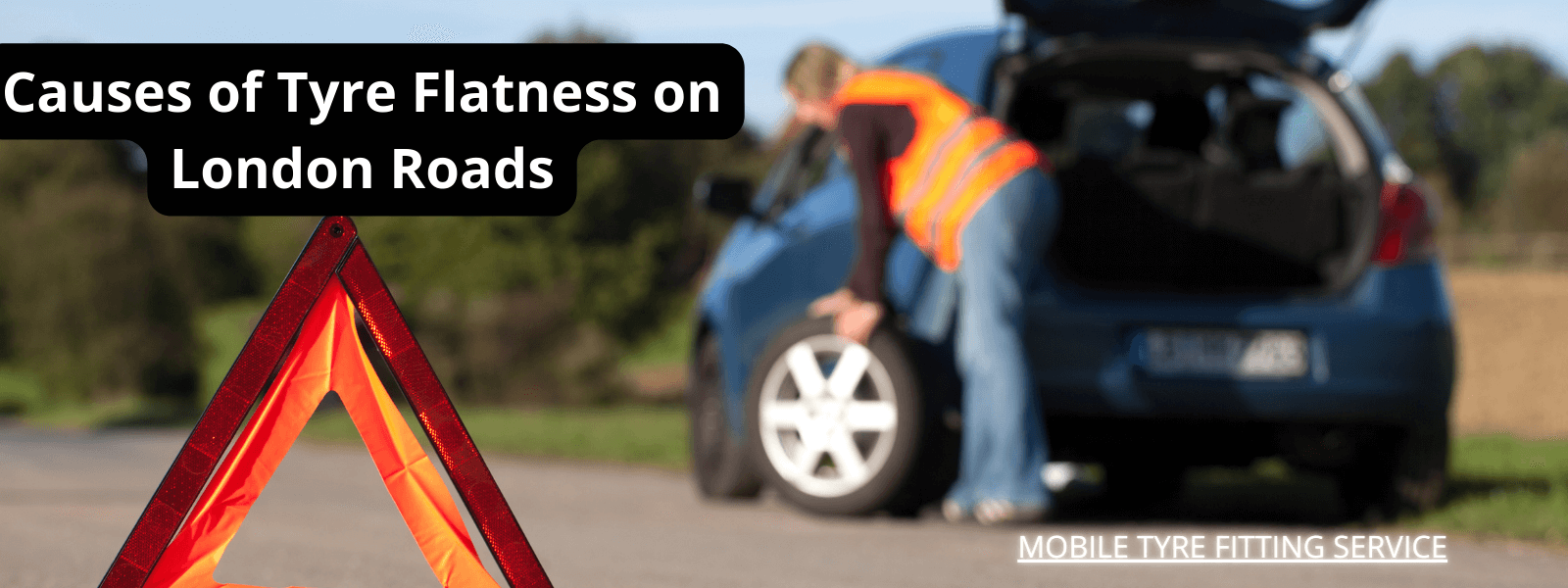- +44 7756 625566
- rjrecovery247@gmail.com
- 24 by 7 Breakdown Cover
Menu

Navigating London’s vibrant city roads can be a thrilling adventure, yet drivers must also contend with its numerous challenges – one being tyre flatness on city roads in London. Identifying and mitigating tyre flatness risks in London is crucial to protecting tyres and ensuring smoother rides – in this article, we outline key contributors and offer insights on how they can be managed and mitigated.
London roads are known for their abundance of potholes, which can wreak havoc on your tires and cause serious damage. Potholes can lead to punctures, sidewall damage or even lead to blowouts; being aware of potholes when possible and avoiding them altogether is key for protecting tires from any unnecessary wear-and-tear damage. It is crucial to keep an eye out for potential threats to tires and to remain vigilant about avoiding them.
City roads may be riddled with debris such as glass shards, nails, screws, and other sharp objects that pose the risk of puncturing your tires. As a result of construction sites, road works, and general wear and tear, flatness risk may be increased; it is imperative that you be aware of your surroundings and navigate safely around debris in these circumstances.
Navigating city streets often requires coming close to curbs, and accidental contact with them may cause sidewall damage that leads to bulged or leaky tyres. Driving carefully at a safe distance away from curbs will help avoid sidewall damage that leads to flatness of tires.
Improper or inadequate tire pressure is often the root of flatness, particularly during city driving with frequent stops and starts that impact tire pressure over time. In order to maintain healthy tires and reduce the chances of flats, it is essential to regularly check and maintain the correct pressure according to manufacturer recommendations.
City driving often involves carrying heavy loads or passengers. Overloading your vehicle places additional strain on its tires, increasing the chance of flat tires. Be mindful to adhere to weight limits specified for your vehicle and distribute load evenly so as to avoid exerting too much pressure on individual tires.
Neglecting regular tyre maintenance checks such as for signs of wear, insufficient tread depth, or damaged valve stems is one cause of city road flatness. Regular inspections and proper tyre rotation and alignment services can help identify any potential issues early and thus help to avoid flat spots on city streets.
(Feel free to contact Rjautorecovery for maintenance tips.)
Aggressive driving behaviors such as sudden braking, harsh acceleration and taking corners at high speeds increase the risk of tyre damage and flatness. Contrarily, practicing defensive driving techniques with appropriate speeds and minimal sudden maneuvers may significantly lessen this likelihood and lower chances of experiencing flat tyres.
Pull over and remain calm: Remaining calm during an emergency situation is essential. If necessary, activate emergency flashers once you have safely pulled over, and find an open area away from traffic to pull over in.
Check your tire for damage once you’ve stopped: once you’ve come to a stop, examine your tire for damage. Driven may no longer be safe if the tread has completely flattened out or if impact damage has completely flattened it.
Reach Out for Roadside Assistance: If your insurance or membership provides access to roadside assistance, make a call and request assistance. They will offer guidance and dispatch help directly to your location – be sure to give them your exact location details! Feel free to contact Rjauto Recovery if you need a mobile tire fitting.
Copyright © 2024 RJ Autos Recovery LTD All Rights Reserved